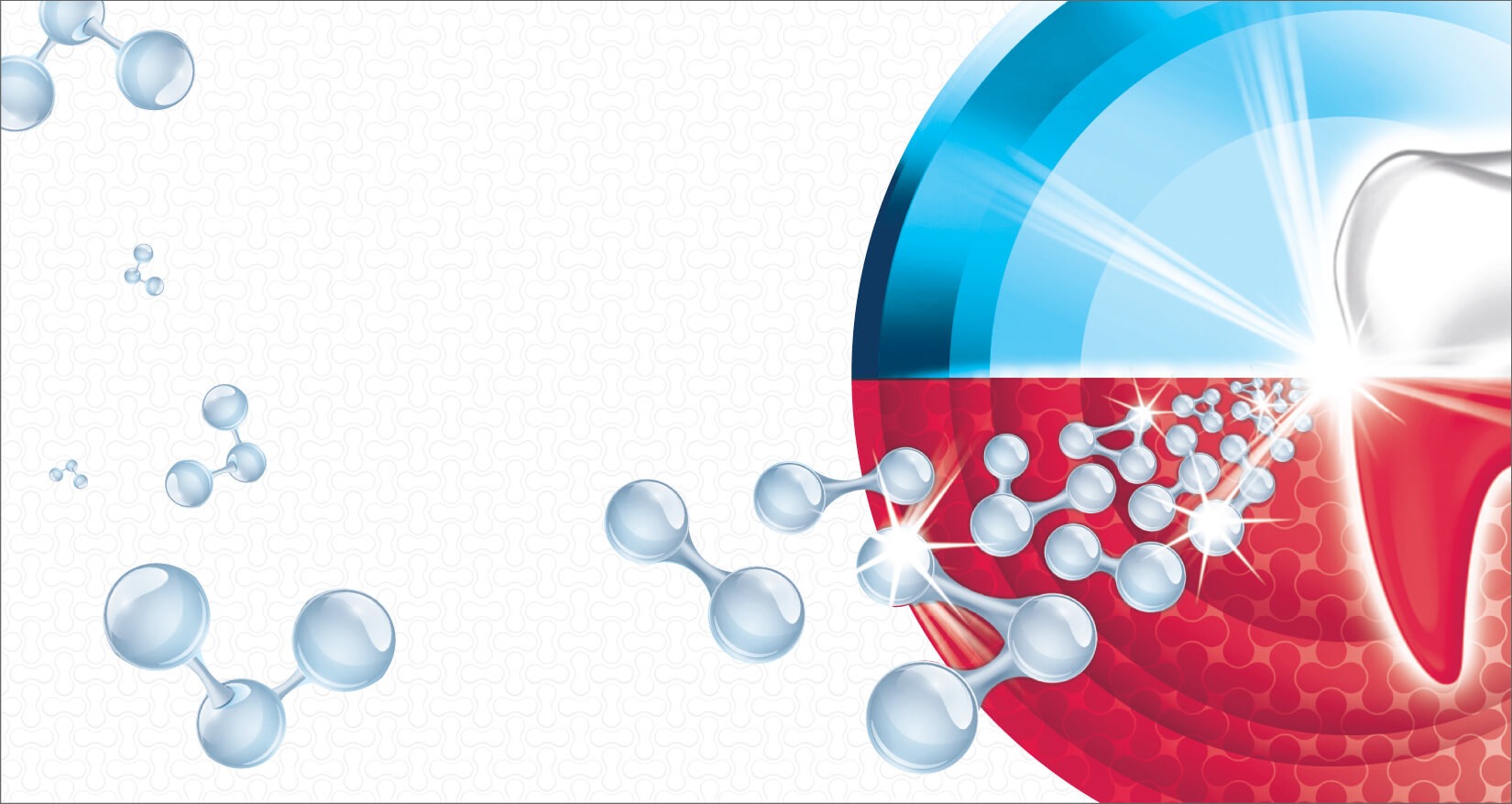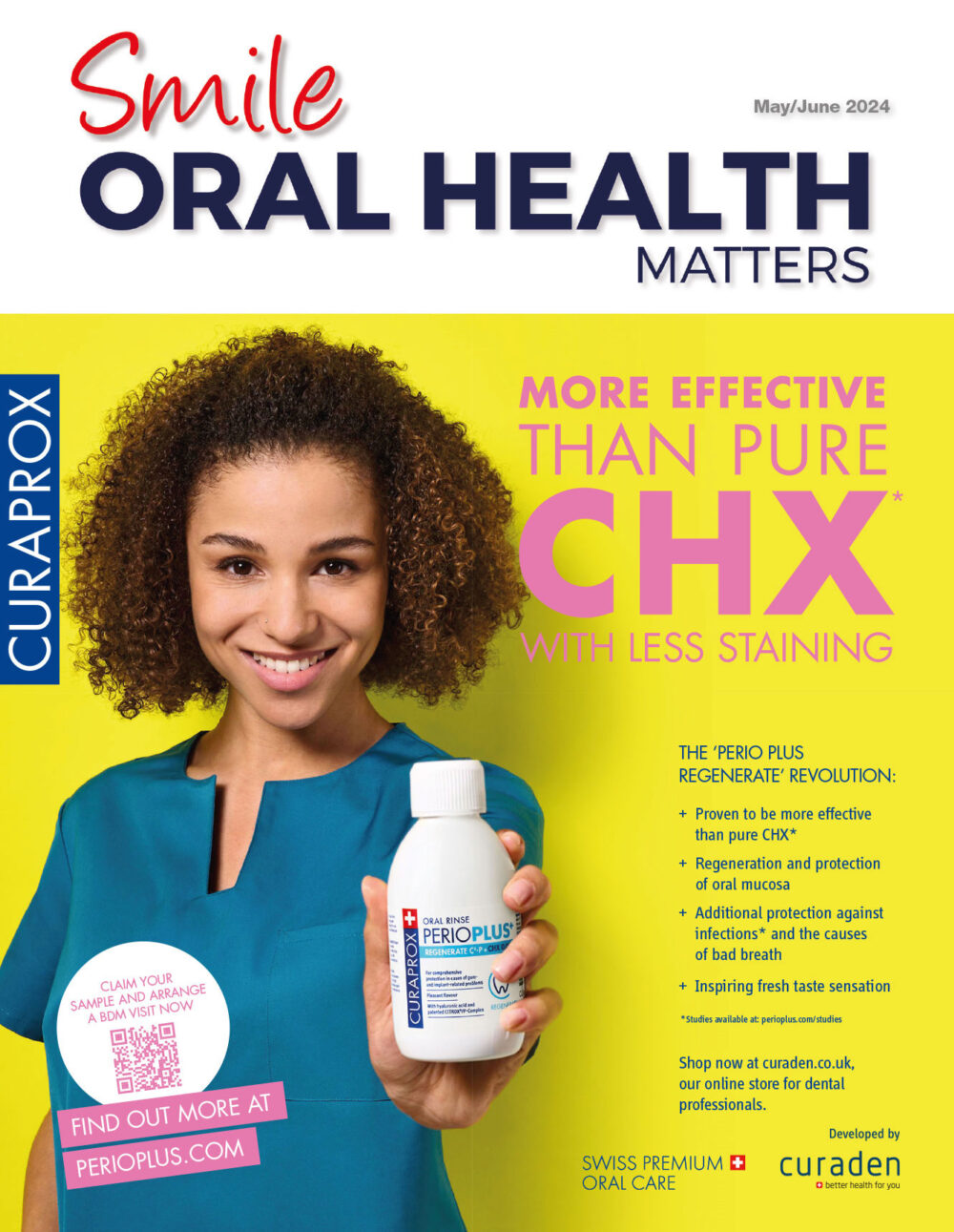 Gingival pain is an indication of many different oral health problems. Clinicians must be able to recognise how they can provide short- and long-term support and relief, as well as recognise the impact that discomfort may have on oral hygiene routines. Uniquely tailored advice can ensure that patients maintain a high level of oral hygiene without causing unnecessary irritation.
Gingival pain is an indication of many different oral health problems. Clinicians must be able to recognise how they can provide short- and long-term support and relief, as well as recognise the impact that discomfort may have on oral hygiene routines. Uniquely tailored advice can ensure that patients maintain a high level of oral hygiene without causing unnecessary irritation.
A common problem
There are many reasons a patient may experience gingival pain. Gingivitis is a plaque-induced problem that can lead to the periodontitis if left untreated,[i] and therefore they share clinical indications. Patients may have inflamed gingivae, manifesting as discomfort on gentle probing.i Often, however, gingivitis does not cause any pain; instead, patients may report a dull soreness in the gingival tissue only when the disease has progressed to periodontitis, which may coincide with the identification of bleeding during oral hygiene routines or visible gingival recession.[ii] By this point, patients risk bone loss and tooth loss without appropriate action.
Desquamative gingivitis is a term describing the presence of erythema, ulceration, erosion, blistering or desquamatation of the attached and marginal gingivae.[iii] It may precede more extensive gingival lesions, and can be linked with a wide spectrum of diseases – including most predominantely mucous membrane pemphigoid, lichen planus, and pemphigus vulgaris. Much like typically understood gingivitis and periodontitis, delay in diagnosis leads to worse treatment outcomes. Implementing patient education in regular appointments allows them to come to clinicans with concerns early, who can use their up-to-date clinical training to formulate a treatment plan.
Some causes of pain may, however, begin with the oral hygiene routine itself. Toothbrushing can cause gingival abrasions which increase in prevalence and severity dependent on bristle stiffness, the force applied to brushing, and the type of toothpaste used.[iv] Some patients should be recommended to try using a softer toothbrush for improved outcomes.
Communication and clinical identification
Other aspects of gingival discomfort may prompt more widespread orofacial pain. Patients will typically experience two types of soreness. A deep somatic pain can indicate the problem has a periapical origin, whereas a superficial somatic pain may signal pain in the gingival tissue itself.[v] Though oral pain is entirely subjective, it’s helpful to encourage patients to describe the painful sensation, when it occurs, and when it is at its worst – though the layman will lack the clinical language for a textbook description, the semantics between a sharp, shooting pain and a dull, constant ache may begin to point in the direction of a clinical diagnosis and treatment plan.
 One example of this being effective is with abscesses in the periodontium. They are a collection of pus, typically classed wider into gingival, pericoronal and periodontal abscesses depending on their location.[vi]
One example of this being effective is with abscesses in the periodontium. They are a collection of pus, typically classed wider into gingival, pericoronal and periodontal abscesses depending on their location.[vi]
Patients with an abscess can experience different types of pain in the gingival tissue. An acute periodontal abscess will typically last a few days or a week, presenting as a sudden onset of pain when biting and a deep, throbbing pain in a tooth – the gingiva becomes swollen and tender, which may be easier to identify in a check-up.vi A chronic periodontal abscess, on the other hand, will develop slowly. As well as discomfort, which is usually of a low intensity, patients may experience spontaneous bleeding and an unfavourable taste in the mouth.vi
Whilst each problem is from an issue of a similar general aetiology, the ways that patients convey their experience of general soreness or sharp, throbbing pains may help with effective identification. Treatment plans can then be better informed for optimal patient outcomes.
Management
Treatment for these sources of pain – and more – in the gingival tissue will vary. Whether the patient needs professional calculus debridement or surgical intervention, or a less invasive route altogether, will depend on the individual. Patients could use over-the counter pain medication, or specially tailored mouthwashes to manage issues at home between appointments.
Good oral hygiene is key to reducing any catalyst for pain and preventing future issues. Twice daily brushing and interdental cleaning is paramount to remove plaque and debris that can cause irritation and infection.
When the periodontium is tender and painful, it may feel difficult for patients to carry out effective routines. Gentle brushing may be recommended, but interdental solutions like the Cordless Advanced water flosser from Waterpik™ may also be incredibly effective. The 3 advanced pressure settings allow patients to access interdental and subgingival spaces with comfort, tailoring their approach when they are experiencing pain. The Cordless Advanced is clinically proven to remove up to 99.9% of plaque from treated areas in as little as 3 seconds,[vii] for an effective clean to minimise irritation and infection.
Gingival pain can be linked to many oral health conditions for patients. Pairing clinical knowledge with a patient’s description of their experience can help deliver successful outcomes.
For more information on WaterpikTM water flosser products visit www.waterpik.co.uk. WaterpikTM products are available from Amazon, Costco UK, Argos, Boots and Tesco online and in stores across the UK and Ireland.
Author: Anne Symons is a Dental Hygienist currently working in a Specialist Periodontal/implant practice and also a busy NHS surgery. She has previously worked in a Max Fax unit, and also taught Oral Health care to staff in Nursing and Residential homes.
[i] Heitz‐Mayfield, L. J. (2024). Conventional diagnostic criteria for periodontal diseases (plaque‐induced gingivitis and periodontitis). Periodontology 2000, 95(1), 10-19.
[ii] InformedHealth.org, (2023). Overview: Gingivitis and periodontitis. (Online) Available at: https://www.ncbi.nlm.nih.gov/books/NBK279593/ [Accessed April 2025]
[iii] Shaqman, M., Hamdan, A., Karadsheh, O., Sawair, F., & Hassona, Y. (2020). Desquamative gingivitis: a challenging diagnosis for clinicians. British Dental Journal, 229(1), 26-30.
[iv] Greggianin, B. F., Oliveira, S. C., Haas, A. N., & Oppermann, R. V. (2013). The incidence of gingival fissures associated with toothbrushing: crossover 28‐day randomized trial. Journal of Clinical Periodontology, 40(4), 319-326.
[v] Miranda-Rius, J., Brunet-Llobet, L., & Lahor-Soler, E. (2018). The Periodontium as a Potential Cause of Orofacial Pain:: A Comprehensive Review. The Open Dentistry Journal, 12, 520.
[vi] Singh, A. K., & Saxena, A. (2015). The periodontal abscess: A review. J Dent Med Sci, 14(11), 81-86.
[vii] Gorur, A., Lyle, D. M., Schaudinn, C., & Costerton, J. W. (2009). Biofilm removal with a dental water jet. Compendium of continuing education in dentistry (Jamesburg, NJ: 1995), 30, 1-6.












